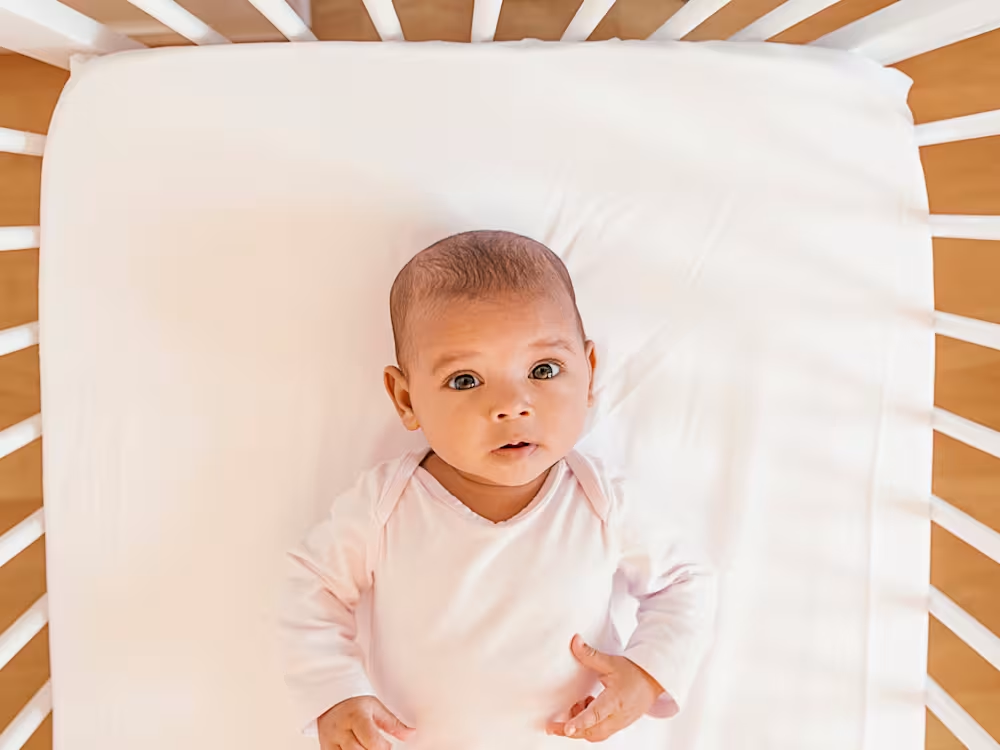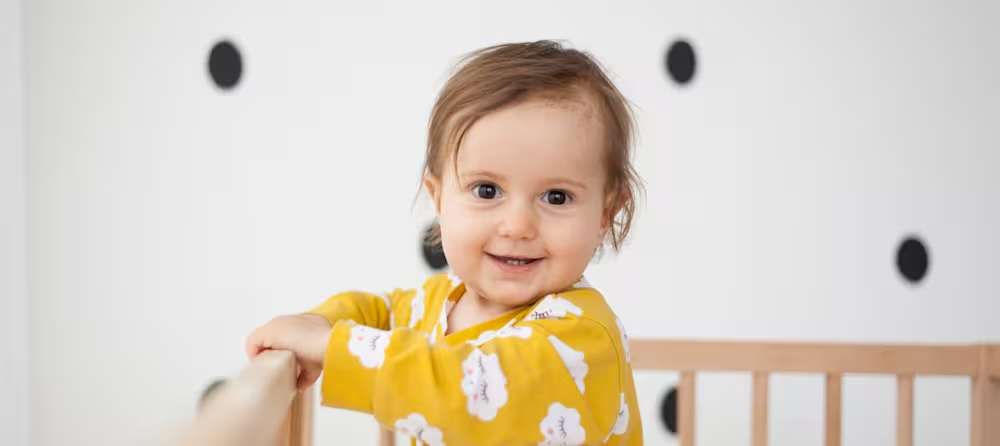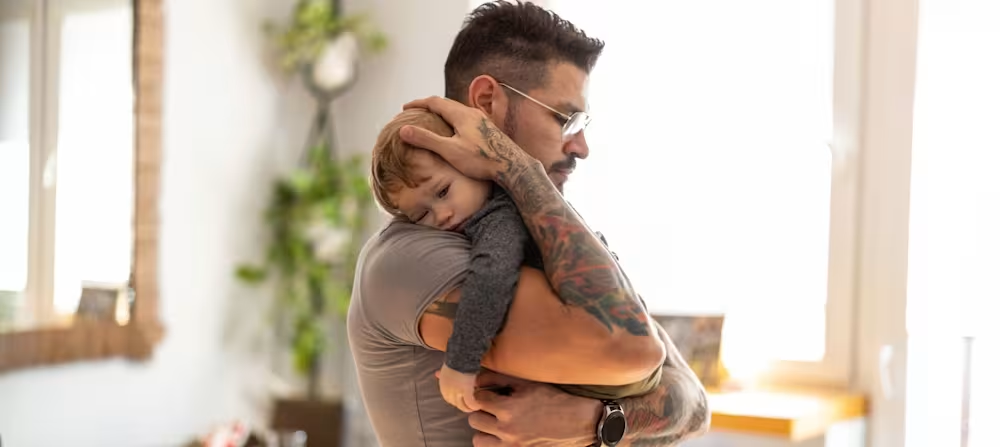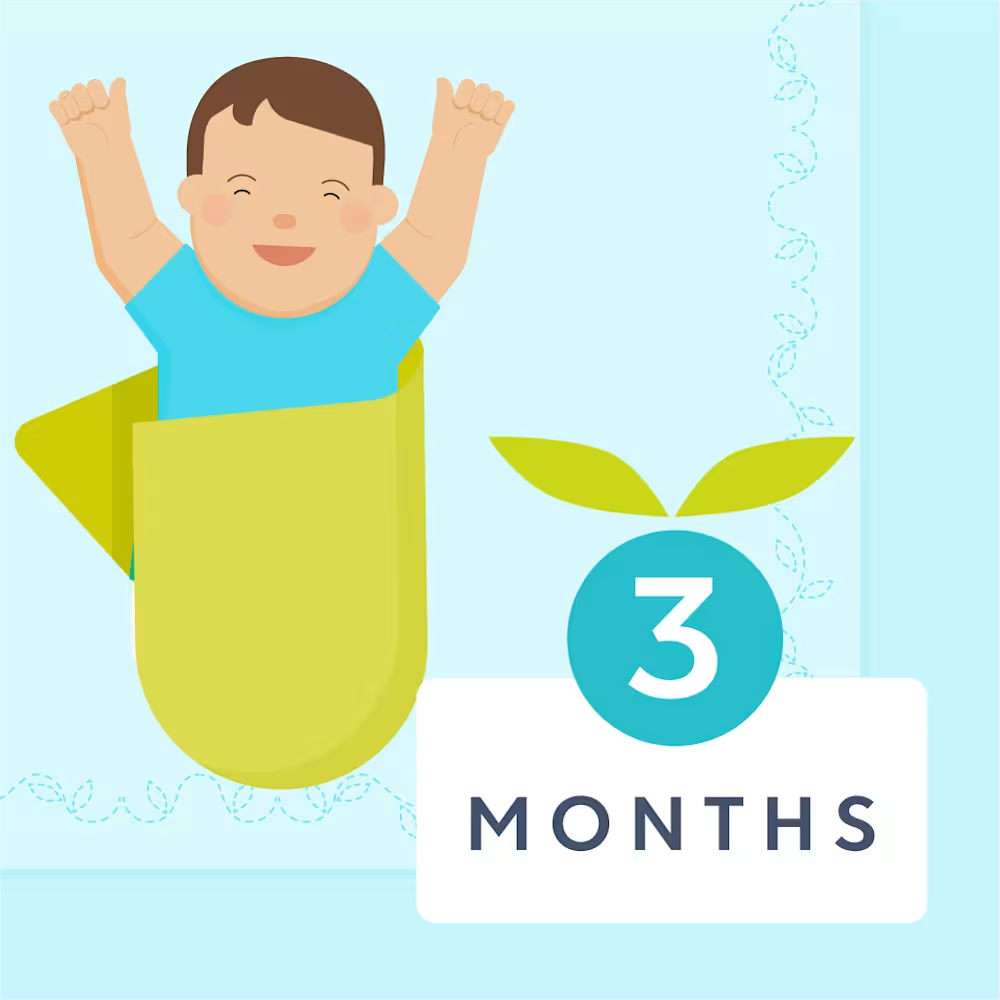Sleep training infants: How to, methods, and tips
Updated Oct 16, 2025

Are you feeling a little tired of the question, “Are they sleeping through the night yet?”
We know the hot topic of sleep floods most conversations in the early stages of parenthood, and it can feel a little overwhelming at times. There is so much advice available, and we want to reassure you that this is your journey, so finding the right sleep solution for your family is of utmost importance.
For this article, the term “infant” refers to babies who are between the ages of 3 - 12 months of age. This period is about constant change and massive developmental leaps; however, there can be a commonality in the way we approach sleep training and how we optimize sleep holistically.
The choice of whether aligns with your needs and suits your family is yours to make. We won't make that decision for you, but we're here to provide you with the information you require to make the best choice for your baby!
Table of Contents
What is sleep training?
Sleep training is the process of teaching your child how to fall asleep independently, in order to improve sleep. It’s normal and appropriate to help newborns fall asleep. However, once a baby reaches 3 - 4 months of age, they may wake more often if they have an external sleep association (ie., they’re fed, held, rocked or patted to sleep).
Learning to eventually fall asleep without the need for “”, or “onset sleep associations” (sleep props) is a process that takes time to master. Note that you can set the foundation for healthy sleep habits right from the start. However, babies under 6 months won’t always be able to consistently fall asleep without help.
The reason many families want to encourage sleep independence once their baby is ready to do so is because external sleep associations can contribute to insufficient sleep. When an infant wakes in the night or after a short nap, a parent or caregiver needs to repeat that help, resulting in fragmented sleep.
Once those new independent sleep skills have been acquired, an infant will be able to fall back to sleep more efficiently, allowing for consolidated, quality sleep. []
Can you sleep train an infant?
Yes you can sleep train an infant, but results typically vary if your baby is under 6 months of age. From 3 - 4 months of age, sleep cycles begin to mature and reflect adult sleep, so in theory, you can start your official sleep training journey from that point onward. However, many babies under 6 months of age may not be developmentally ready to fall asleep completely independently all the time, so if your infant is struggling, you may need to step in to help or pause sleep training and try again in a month or so.
From about 5 - 6 months of age, you can sleep train your infant if desired, assuming your baby isn’t sick and there aren’t medical conditions to consider. If your little one isn’t feeling well or you’re in the process of investigating medical conditions such as food allergies/sensitivities, reflux, tongue/lip ties, tummy issues, etc., then we recommend speaking with a medical provider first.
If you are not sure, we always recommend consulting with your pediatrician to check.
Here are some sleep training articles that are specific to the infant age range that may also provide more help:
How many nights does it take to sleep train an infant?
It depends on the age of your child, their temperament, and your chosen method. We typically recommend starting with bedtime only rather than tackling all sleep periods altogether. Once progress is made there, you can move on to naps and/or remaining night wakings with more success.
If using a “faster” method, the short answer is approximately 1 - 2 weeks for nights and possibly another 1 - 2 weeks for naps and night wakings, depending on a number of factors, including your consistency, which approach you implement, and whether your child still needs night feedings. If you decide to use a more gradual sleep training method, then it will typically take longer than this.
Sleep training methods for infants
| Sleep training method | Does it work for infants? |
|---|---|
| Gentle or gradual method including the Pick Up/Put Down method | Yes! Great for younger infants as most need more time to adjust to change and these methods allow you to be more present and hands-on. More time intensive so progress can be a lot slower. |
| The chair method | Yes! Still allows you to be quite physically present in the sleep training process, however, there is a clear end-point with you leaving the room within a short timeframe. Progress can be moderately fast. May not work for infants who become more stimulated with adults in the room but who are no longer” helping” them to fall asleep. May not be workable for families with multiple children to attend to at the same time. |
| Ferber method or gradual extinction technique | Yes. Parents can still offer physical comfort and be in the room but only for very short periods. Some infants become more upset with frequent “check-ins.” |
| Cry it out or total extinction | Yes but not recommended for younger infants. If the previous methods do not align with your baby’s temperament, this may be the method to try. It is strongly recommended to use a video monitor or quietly check from the doorway a few times for safety reasons. |
If you still aren’t sure which will be best for your family, we recommend starting with a more gradual/gentle approach for a few nights and seeing how you and your baby respond before switching things up.
Bear in mind that there is sometimes a regression that occurs part-way through sleep training, typically between nights 3 - 7. This doesn’t mean your approach isn’t working; it is just a bump in the road, so keep at it. If you can get through that temporary setback, you will see progress.
Gentle/gradual sleep training method including Pick-up/Put-down approach
These approaches make changes to sleep habits gradually over a longer period.
The goal is to slowly fade out any feeding, rocking, movement, and/or holding until your infant can be placed into the crib drowsy. From there you may swap to patting or stroking until your baby can be placed into the crib awake without the need for any physical touch. The final stage is to gradually transition yourself out of the sleep space altogether (see chair method below) to allow for complete sleep independence.
These methods can also be referred to as “fading.”
The chair method
This is a great method to choose if you prefer to be more hands-on with the sleep training process, but want to see progress within a shorter period.
To implement this method, place a chair next to the crib and provide occasional physical and verbal reassurance. From there, you move your chair closer to the doorway over a few nights or up to a week. As you physically distance yourself from your child, you reduce the amount of reassurance given. Finally, you remove the chair altogether and walk out of the room before your infant falls asleep. This method can be used as part of the gentle or gradual sleep training approach.
If your baby still needs some reassurance to fall asleep once you have left the room altogether, you can then follow the Ferber Method for a few nights if it’s within your comfort level.
or gradual extinction technique
These sleep training methods are a type of modified “cry-it-out” (CIO), however, they differ greatly from “total extinction” because you can offer responsive settling when in the room. You can also choose how long to leave your baby before checking in on them to offer reassurance.
After a calming pre-bedtime routine, begin by placing your infant into their crib awake and saying goodnight. Remove yourself from the room and implement timed “check-ins.” These checks begin with between 1 - 5 minute intervals and gradually increase over time. You only reenter the room at your designated time.
This method works best for slightly older infants who find your presence in the room distracting or if you have other children who need your attention at the same time.
or total extinction method
This can be the most controversial method of sleep training. It is very fast, however, it can result in some pretty intense periods of crying. This is better suited to older infants and toddlers or for those babies who haven’t made progress with any of the slower methods.
With this approach, you place your infant into the crib awake and don’t return to offer any form of reassurance at all.
We strongly recommend using a video monitor or quietly checking from the doorway a few times for safety reasons.
Sleep training tips for infants
Here are some sleep training tips for infants:
Setting a positive sleep foundation is the best place to start before any formal sleep training
Both under and over-tired infants will struggle to fall asleep and stay asleep
Sleep is never perfect
Find more information below:
Tip #1: Setting a positive sleep foundation is the best place to start before any formal sleep training
Establish a predictable to cue your baby that it is time for sleep.
When at home, provide a quiet, dark, cool sleep space.
A is a baby who will sleep for longer.
If you suspect your baby may have some underlying medical condition that could be affecting their sleep, we recommend consulting with your pediatrician, health professional, or feeding consultant before sleep training.
Tip #2: Both under and over-tired infants will struggle to fall asleep and stay asleep
For infants under 9 months of age, we recommend watching for and awake windows to help you navigate when the next sleep session should take place. Using our predictor is a very useful tool.
From about 9 months of age, once your infant is on a 2-nap schedule, following a “by the clock” will be more achievable. We still suggest following your baby’s tired cues and recommend wake windows as they will evolve.
Tip #3: Sleep is never perfect
Just because your baby is sleep trained, this does not guarantee they will never have a bad night or terrible nap. There could be lots of reasons why your baby is struggling to sleep at that moment. Often these are temporary, however, if you start to see a pattern, this can indicate that a schedule adjustment is needed.
Whenever your baby wakes early from a nap or in the middle of the night, try to pause for a few minutes to allow them to resettle independently before stepping in.
Sometimes if sleep goes pear-shaped for a week or so, then you may need to repeat the sleep training process to get things back on track.
Can you sleep train an infant for naps?
Yes! Nap sleep training generally takes longer to see progress compared to nighttime sleep training due to the reduction in sleep pressure, so it is possible. It does take consistency and a lot of patience.
When you are sleep training your baby at nap time, the first step is to work on them being able to fall asleep independently at the beginning of the nap.
Learning to connect sleep cycles mid-nap is a very difficult skill to master therefore, it is common for naps to shorten during this learning phase.
Can you sleep train infant twins?
Yes! Many families choose to temporarily separate twins during sleep training, especially if one is sleeping better than the other.
Use in between the cribs to try to muffle some of the noise if they are room-sharing.
If there are two adults on hand, you could choose to assign a twin to each person to make the process more manageable.
Can you sleep train during sleep regressions?
Yes, you can sleep train during a , however, it may take a little longer to see progress. To be honest, it may not ever be the perfect time to sleep train, so don’t let a regression put you off giving it a go.
What to do if sleep training my infant is not working?
There could be a variety of reasons why sleep training isn’t working for your infant - and it is more common than you think. Every child is different, and what works for one may not work for another.
Here are a few things to consider if sleep training is not working for you.
Consistency is key. If you help your baby to fall asleep sometimes and not others, it can be confusing for them and progress will stall.
Sleep training isn’t about mastering each step before moving on to the next one. Keep moving forward and not backward, even if your little one is having a temporary setback at night.
Keep an eye on wake windows and . Check to see if your infant needs a schedule adjustment and is following an .
Could there be any underlying medical reasons causing sleep difficulties? If in doubt, we recommend consulting with your pediatrician.
If you have concerns about your infant's sleep or if you're experiencing significant difficulties, don’t hesitate to reach out to us for a customized sleep plan through for additional guidance and support.
Takeaway
The goal of sleep training is to support your infant in the process of being able to fall asleep without any external help. This in turn will give them the necessary skills to connect cycles and sleep for longer. A well-rested baby is a happy, healthy baby.
Sleep training can be an incredibly exhausting process, however, once your baby is an independent sleeper your entire family should be getting the sleep you need.
There are also other positives to the sleep training process besides quality sleep and that is the opportunity to get to know how your little person learns and adjusts to change. This can be valuable in all areas of their life moving forward.
Sleep training infants FAQ
If you're curious about what lies ahead with sleep training, glimpse into the future to see what you might experience when it comes for and .
Share article:
Note: The content on this site is for informational purposes only and should not replace medical advice from your doctor, pediatrician, or medical professional. If you have questions or concerns, you should contact a medical professional.
2 Sources
Table of Contents
Share article:











